Raspberry variety Hercules (Hercules)
Hercules is the epic hero of ancient Greece, the embodiment of strength, dignity and power. Of course, after the appearance of raspberries with such a loud name, everyone's attention was guaranteed. This was one of the first renovation works of the legendary academician I. V. Kazakov. And at one time this variety was considered, without a drop of exaggeration, "elite". It was the reason for the undisguised pride of its lucky owners and the object of dreams of gardeners who did not have it, who by hook or by crook tried to get it for themselves. Since then, enough time has passed, now you can buy Hercules inexpensively and without problems, and new crimson "titans" have appeared on the market, in turn. But whether Hercules managed to stay on the berry Olympus - in our article below.
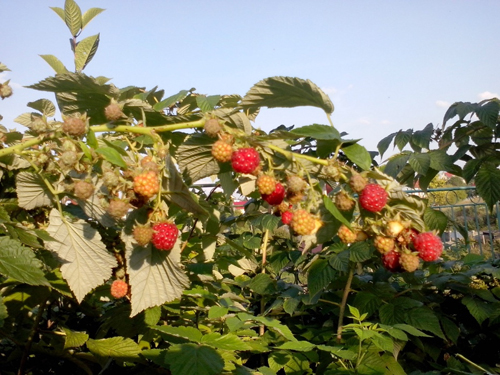
History of creation
This raspberry was bred on the basis of the Kokinsky support point of VSTISP (Bryansk region) by breeders I.V. Kazakov and S.N. Evdokimenko. It was obtained as a result of crossing a British variety from the East Malling Research Institute - Otm Bliss (Autumn Bliss), and numbered variety No. 14-205-4. Hercules is included in the State Register of Breeding Achievements of the Russian Federation in the Central Region (Moscow, Tula, Ryazan, Smolensk, Ivanovskaya, Bryansk, Vladimir, Kaluga regions). Russian patent No. 2410 was issued in 2004. The patent expires in 2034. The copyright holder is the All-Russian Institute of Selection and Technology for Horticulture and Nursery, Moscow.
Description
Hercules is a large-fruited remontant variety for universal use with fruiting mainly on annual shoots. The bush is of medium height and vigorous growth, slightly spreading. Raspberry forms few substitute shoots. Basically, their number is 3-4 pieces. The height is usually up to 1.5 meters, but with good agricultural technology it grows up to 1.80 meters. The shoots are very strong, erect (standard type), during cultivation it is quite possible to do without a support or trellis. At the beginning of their growth, the stems are green, towards autumn they acquire a purple-brownish color with a waxy coating. Pubescence is absent. The shoots of Hercules are rather spiny. Spines directed downward, located along the entire length of the stems, thin, tough, prickly, light brown at their base. The leaves of the variety are large, slightly wrinkled, slightly twisted, green in color, whitish on the underside. There is no pubescence on them. The edges of the leaflets are moderately sharp. Raspberry flowers are white, medium-sized, 1-1.5 cm in diameter, profuse flowering, begins in June.
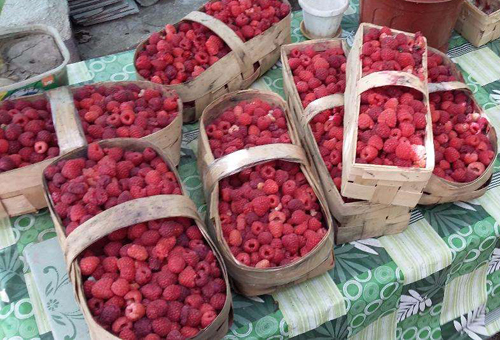
The berries are large and very large, beautiful and showy, wide, truncated-conical in shape, with weak pubescence. Their average height is 2 cm, and their width is 1.9 cm. Fruits are red, deep ruby at full maturity. The berries are quite dense, but their flesh is juicy. Drupes are small, homogeneous, tightly interconnected. The berries are easily separated from the fruit, with a dry separation, do not crumble or fall off the bush after ripening. The average weight of fruits in the season is 5-6 grams, the minimum is 3.5 grams, the maximum is up to 10-11 grams.
The taste is sweet and sour, refreshing. But it is often rustic, one might even say, distantly crimson, freshish. The sugar content, according to patent data, is 9.8% (Brix level), acid 1.3%, vitamin C 32 mg /%, soluble solids (RSV) from 8% to 10.8%. But in studies conducted by a group of Bryansk scientists headed by S. N. Evdokimenko, Hercules often showed sugar levels below 5%. The minimum amount was 4.4%. And these figures are already much closer to reality, since 9.8% of Brix is observed in really sweet and tasty varieties, which, unfortunately, Hercules is not. Although the experts' tasting score is 4.0 points out of 5.0 possible. Well, it depends, of course, with what they compared him. But in objective reality, the overwhelming majority of summer residents and gardeners give him a solid three.Well, there are also three with a plus. Transportability and keeping quality of raspberries are at a decent level.
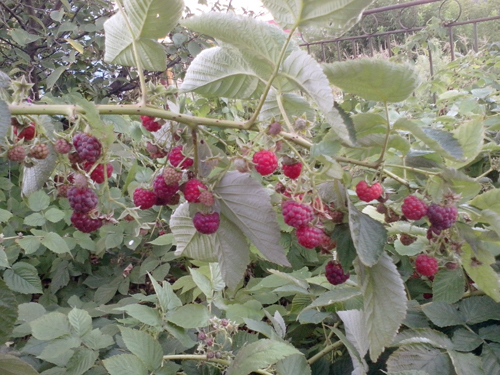
I would like to say a few words about the percentage of soluble dry matter (RSV), so that readers can understand more clearly what it means in the characteristics of berries. And this is a very important indicator! All these substances mainly determine the mechanical strength of fruit tissues, their consistency, transportability and longevity directly depend on their quantity. And Hercules has a really high percentage of RSV. The dry matter content depends not only on the species and variety, but also on the climatic conditions of growing (weather). For example, watering before picking berries, of course, increases their volume and weight, but reduces the concentration of dry matter, therefore, worsening the commercial characteristics of the fruit. As a result, the berries may simply flow during transportation.
The yield is decent - from 1.5 kg to 3 kg per bush. On average, from 130 to 180 fruits ripen on one shoot, depending on growing conditions and agricultural technology. On an industrial scale, the average yield is 9.2 tons per hectare. As mentioned above, Hercules can be grown without a support or trellis. But under the load of numerous ripening fruits, the stems may bend slightly (slope about 45 degrees). The fruiting zone mainly takes up to half of the shoot. The variety is resistant to the main diseases and pests of raspberries.
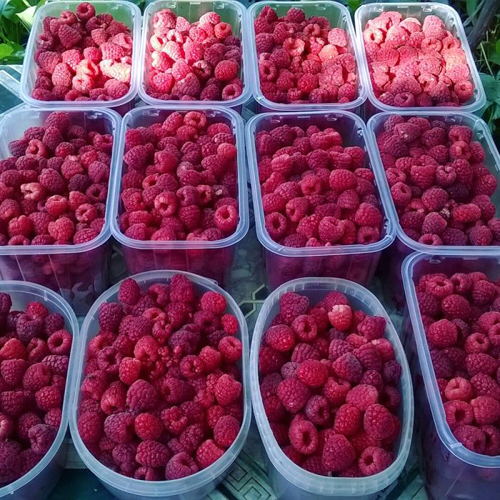
The cultivation technology provides for the mowing of the aboveground part of the plants before they leave for the winter. The same operation can be carried out in early spring by cutting the stem by 50% in the fall. Although not so long ago, all "experts" advised pruning only in the fall! An adequate question arises - why? The plant, on the other hand, goes into hibernation and uncircumcised shoots will not interfere with raspberries in any way, taking on some of the nutrients and forces. But the root, even in winter, continues to grow little by little and form root buds, which later turn into root shoots (nettles). This process, by the way, is very positively influenced by a small subzero temperature.
And now spring comes. The root at that time in the still cold, unheated earth cannot fully fulfill its function. And on last year's uncircumcised shoot, buds wake up and leaves bloom in the early stages. And thanks to the process of photosynthesis, the plant begins to receive organic substances that it needs so much after winter. As a result, raspberries "start" much earlier. But after the appearance of young replacement shoots, the old ones must be cut out immediately. Now they have completely exhausted their resource and will only interfere in the future. Of course, if the variety is not a full-fledged totimer.
For a second harvest on last year's shoots, Hercules is not suitable - there are few berries, they are dry and small. In central Russia, it gives up to 70-80% of the crop before frost, in the south the percentage is even higher. Enters fruiting early and ends early. In the southern regions from July to October, in other regions from the beginning of August. Our hero is great for the production of berries in the off-season, when there are few or no raspberries on the market, because the early and middle summer varieties have already mostly borne fruit, while other remontants are still in bloom.
Roughly speaking, the variety is problem-free. Or rather, a little problematic. A real workhorse. Therefore, Hercules has been successfully grown for many years both in Russia and in neighboring countries, in particular in Ukraine, preferring it to a wide range of others. But I would like to make a reservation right away - these are mainly multi-hectare industrial plantings of raspberries for the sale of products for export, wholesales of fresh berries, for freezing (Hercules is very suitable for her) and processing. It is a good market variety - early, with a beautiful berry, large and transportable.The fruit looks great on the counter. After all, a significant part of buyers, as they say, "eat with their eyes." Such clients put taste directly in second place, and therefore our hero is always in demand.
disadvantages
- The berries are partially covered with thorny branches, it can be problematic to find and collect them in a timely manner, the variety is generally very thorny.
- With the last samples, the berry becomes smaller. It also loses its size and shape in extreme heat and with a lack of moisture.
- With prolonged rains, the fruits can become limp.
- Hercules produces large quantities of root growth. For grooming, this is a big minus, for reproduction - a significant plus.
- Weak vigor, raspberries give few replacement shoots.
- Poor taste (medium and below) and insufficient sugar content in berries.
Advantages
- Beautiful, large and very large berries of excellent presentation.
- Good transportability and keeping quality of fruits.
- Strong erect shoots, allowing to grow the variety without supports and trellises.
- Stable, good yields. A real raspberry workhorse.
- Early terms of the onset of fruiting, the possibility of harvesting in the off-season. And also a significant percentage of the return of fruits before frost, which makes Hercules interesting for gardeners of the northern regions.
- Resistance to diseases and pests, many call our hero a problem-free variety.
- Small bush, slightly spreading. This allows you to plant raspberries with a higher density per unit area and save on row spacing.
Based on the above and the above characteristics, we can draw the appropriate conclusions. If you are an industrialist and the goal is a purely commercial use of the variety for the market of fresh berries, freezing and processing, then Hercules is quite suitable. But the time when he was the undisputed king of summer cottages is long gone. Today there are many interesting varieties with the same large beautiful berries, high yield rates, weakly thorny or even without thorns, capable of pulling two crops without problems. And the main factor is with tasty, aromatic and sweet berries. The choice, of course, is yours, but we think our article will help you make it right!
Author: Maxim Zarechny.




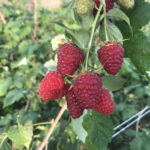
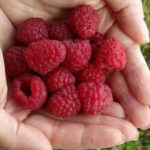



I really want to have only a minimum on a small garden plot, but at the same time be with a bountiful harvest. So, I bought four Hercules raspberry seedlings. In the first year, of course, there was nothing, since the raspberries were growing, and I was waiting for the "miracle harvest". In the second year, fruiting began, there was a small harvest. Already in the third year, I harvested a very high harvest from four bushes, the height of the bush reached about two meters. The fruits are very large, picked very quickly - in 15 minutes a bucket of raspberries 7 liters. The next week I had the same harvest! My neighbors in the garden began to wonder where I bought such seedlings, everyone wanted to get rid of a large plantation and plant two pairs of bushes, freeing up so much space on their plots. I am very happy with this variety!
The impressions of this variety are only positive. Let it be prickly and gives a lot of unnecessary growth, but the number of berries covers all the shortcomings. The bush is quite powerful and does not fall, but I still tie it up for convenience when picking berries. Several times I tried to leave a couple of bunches in the fall, but 1-2 berries managed to ripen, so I left this venture. I water it very rarely, only in a particularly dry summer, as there are problems with water. Raspberries “do not take offense” at this and the yield does not decrease.